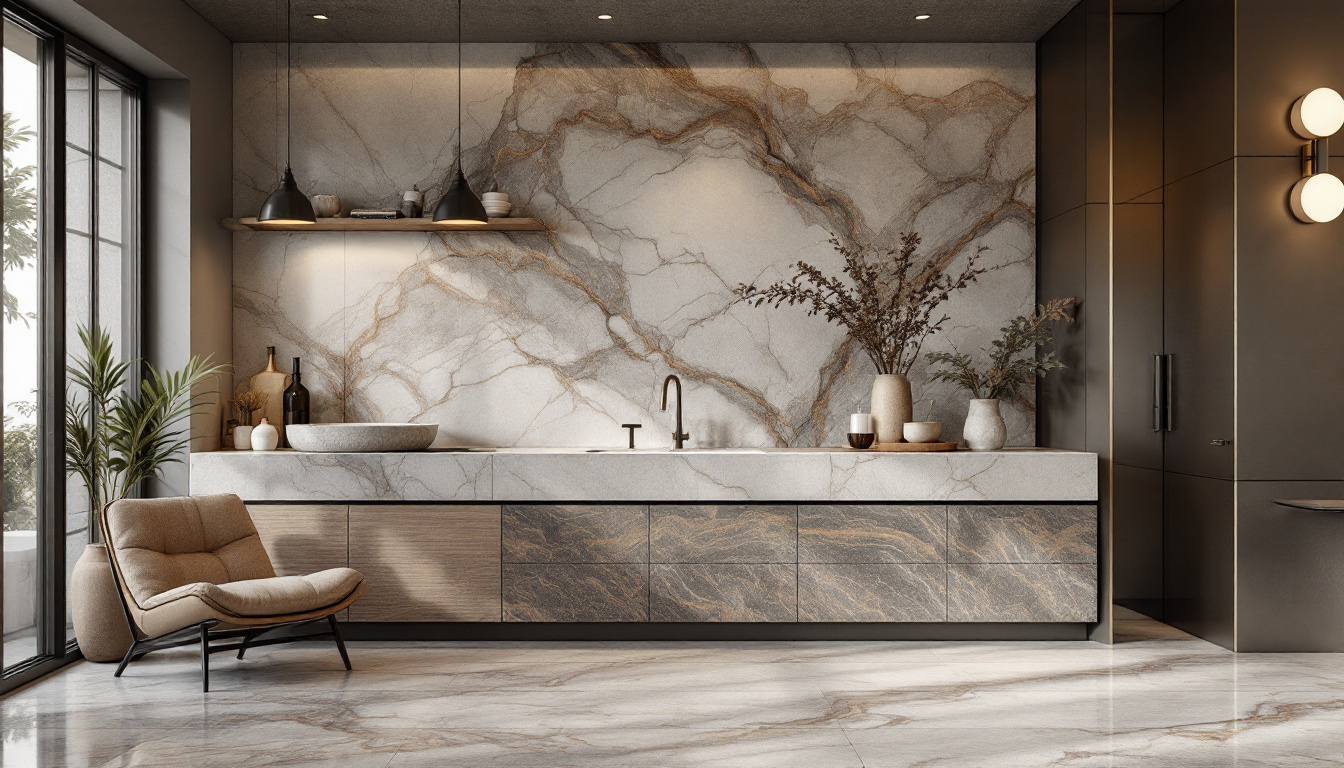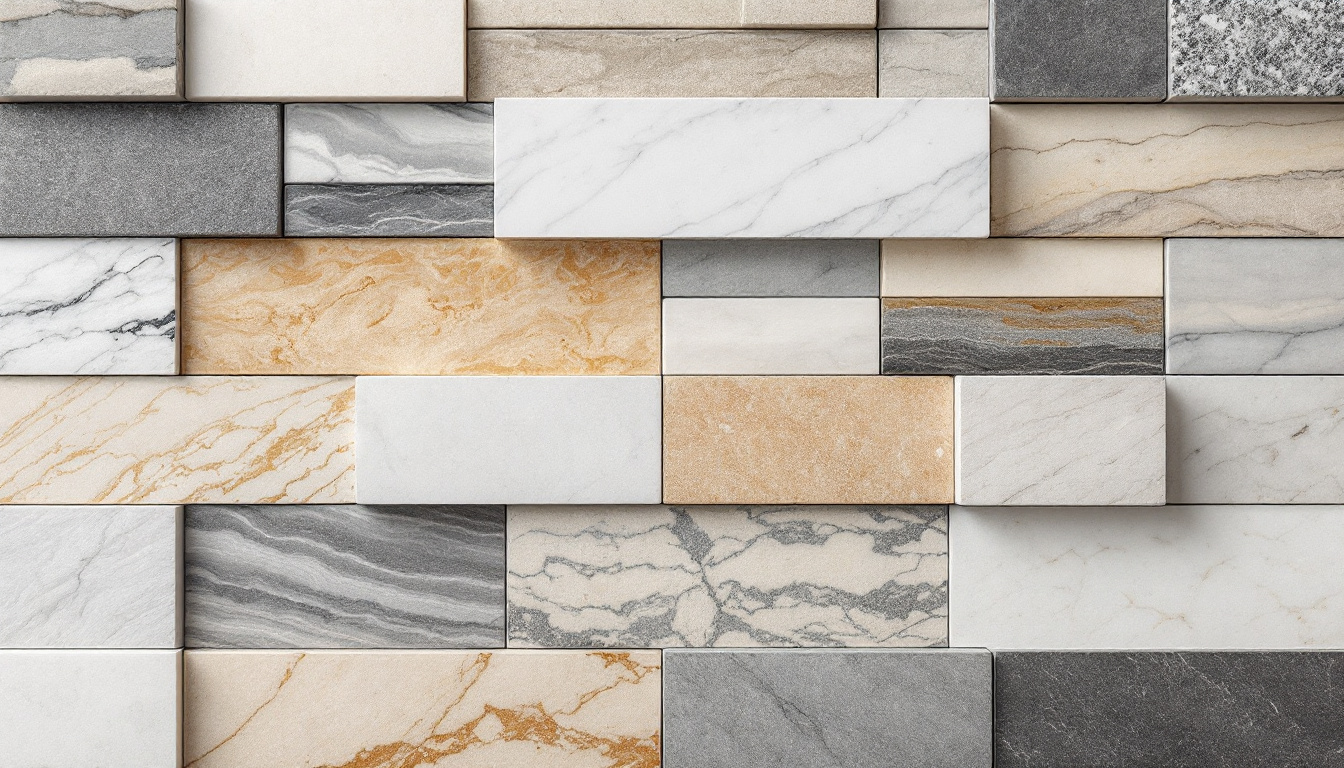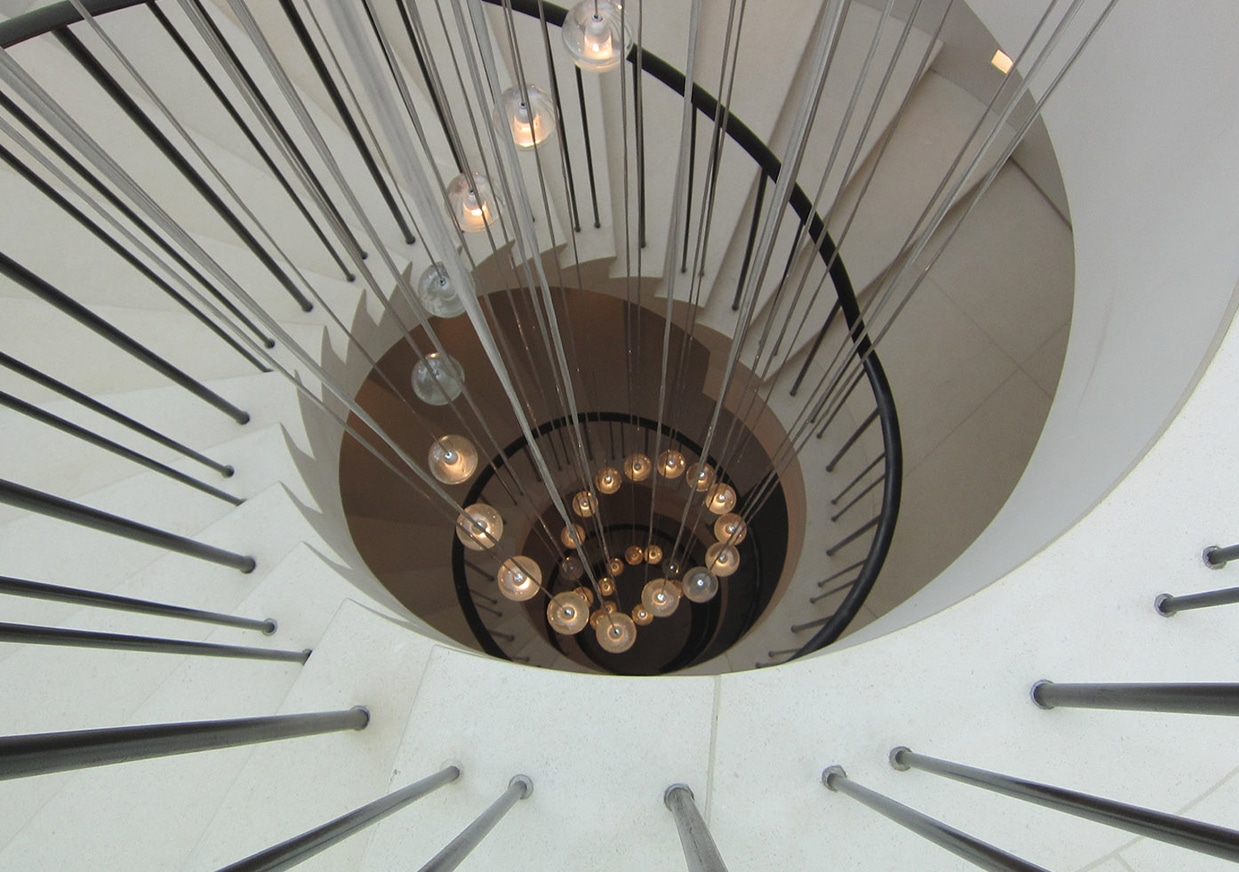
Backsplashes, often an overlooked element of interior design, play a pivotal role in enhancing the aesthetic appeal of a space while providing functional benefits. They are particularly significant in bespoke natural stone interiors, where they serve as a harmonizing element that ties together the overall design theme.
Backsplashes can be crafted from a variety of materials, but natural stone stands out for its unique characteristics and timeless appeal. This article delves into the intricate world of backsplashes in bespoke natural stone interiors, exploring their purpose, types, design considerations, installation process, maintenance, and much more.
Understanding Backsplashes
Backsplashes are vertical extensions to a counter—typically in a kitchen or a bathroom—that protect the wall from splashes of water or cooking splatters. While their primary function is protective, they also offer an opportunity to add a distinctive design element to a space.
When crafted from natural stone, backsplashes bring an element of nature into the interior space, adding texture, color, and a unique pattern to the room. They can be a focal point or blend seamlessly with the rest of the design, depending on the stone chosen and the design approach.
The Purpose of Backsplashes
Backsplashes serve a dual purpose: they protect the wall from moisture and stains, and they add aesthetic appeal to the space. In kitchens, they are particularly beneficial behind the stove and sink where water and cooking splatter are common. In bathrooms, they protect the wall behind the sink.
From a design perspective, backsplashes can be a focal point or a subtle design element. They can be used to introduce a new color or texture, to tie together the design elements of the room, or to add a dramatic effect.
Backsplashes in Bespoke Natural Stone Interiors
In bespoke natural stone interiors, backsplashes are often crafted from the same stone as the countertop for a seamless look. However, they can also be made from a contrasting stone to create a focal point. The choice of stone, the finish applied, and the design of the backsplash all contribute to the overall look and feel of the space.
Common natural stones used for backsplashes include granite, marble, quartz, and travertine. Each stone has its unique characteristics, offering a range of colors, patterns, and textures. The choice of stone often depends on the desired aesthetic, the practical requirements of the space, and the budget.
Types of Natural Stone Backsplashes
Natural stone backsplashes can be classified based on the type of stone, the finish applied to the stone, and the design of the backsplash. Each type offers a unique aesthetic and has its pros and cons.
It’s important to understand the characteristics of each type of stone and the impact of different finishes and designs to make an informed decision. The choice should be guided by the desired aesthetic, the practical requirements of the space, and the budget.
Types of Stone
Granite, marble, quartz, and travertine are the most common types of natural stone used for backsplashes. Granite is known for its durability and wide range of colors and patterns. Marble offers a classic, elegant look but is more prone to staining and requires more maintenance. Quartz is a man-made stone that offers the look of natural stone with less maintenance. Travertine, a type of limestone, offers a rustic, old-world charm.
Other types of stone that can be used for backsplashes include slate, limestone, and onyx. Slate offers a rustic look and is highly durable. Limestone offers a soft, subtle look but is more prone to staining. Onyx is a semi-precious stone that offers a dramatic, high-end look.
Types of Finishes
The finish applied to the stone can significantly impact the look and feel of the backsplash. Common finishes include polished, honed, and leathered. A polished finish gives the stone a glossy, reflective surface and brings out the colors and patterns of the stone. A honed finish gives the stone a matte, non-reflective surface and offers a more subtle, contemporary look. A leathered finish gives the stone a textured surface and offers a rustic, casual look.
The choice of finish often depends on the desired aesthetic and the practical requirements of the space. A polished finish, for example, is more resistant to stains but shows scratches more easily. A honed finish is more resistant to scratches but shows stains more easily. A leathered finish is more resistant to both stains and scratches.
Design Considerations for Natural Stone Backsplashes
Designing a natural stone backsplash involves several considerations, including the choice of stone, the finish, the design of the backsplash, the height of the backsplash, and the choice of grout. Each decision impacts the overall look and feel of the space, as well as the maintenance requirements.
It’s important to consider the overall design theme of the space and the practical requirements when making these decisions. The backsplash should complement the other design elements in the room and meet the practical needs of the space.
Choice of Stone
The choice of stone is perhaps the most significant decision when designing a natural stone backsplash. It impacts the color, pattern, and texture of the backsplash and sets the tone for the space. The choice should be guided by the desired aesthetic, the practical requirements of the space, and the budget.
For a classic, elegant look, marble is a popular choice. For a durable, versatile option, granite is often preferred. For a rustic, old-world charm, travertine or slate can be a good choice. For a high-end, dramatic effect, onyx can be considered.
Choice of Finish
The finish applied to the stone impacts the look and feel of the backsplash and the maintenance requirements. A polished finish gives the stone a glossy, reflective surface and brings out the colors and patterns of the stone. A honed finish gives the stone a matte, non-reflective surface and offers a more subtle, contemporary look. A leathered finish gives the stone a textured surface and offers a rustic, casual look.
The choice of finish often depends on the desired aesthetic and the practical requirements of the space. A polished finish, for example, is more resistant to stains but shows scratches more easily. A honed finish is more resistant to scratches but shows stains more easily. A leathered finish is more resistant to both stains and scratches.
Installation of Natural Stone Backsplashes
The installation of a natural stone backsplash involves several steps, including measuring the space, preparing the wall, cutting the stone, applying the adhesive, setting the stone, grouting the joints, and sealing the stone. Each step requires precision and attention to detail to ensure a successful installation.
While it’s possible to install a natural stone backsplash as a DIY project, it’s often recommended to hire a professional installer. This ensures the job is done correctly and avoids potential problems down the line.
Measuring the Space
The first step in the installation process is to measure the space where the backsplash will be installed. This includes measuring the length and height of the wall, as well as any cutouts for outlets or switches. These measurements will determine the amount of stone needed and guide the cutting process.
It’s important to measure accurately to ensure the stone fits properly. It’s also important to account for the size of the grout lines when calculating the amount of stone needed.
Preparing the Wall
The wall where the backsplash will be installed needs to be clean, dry, and flat. Any old paint, wallpaper, or adhesive should be removed. Any holes or cracks should be filled and sanded smooth. If the wall is not flat, it may need to be levelled.
If the wall is made of drywall, it may need to be primed to prevent the adhesive from soaking into the wall. If the wall is made of a porous material like concrete or brick, it may need to be sealed to prevent moisture from seeping into the wall.
Maintenance of Natural Stone Backsplashes
Natural stone backsplashes require regular maintenance to keep them looking their best and to prolong their lifespan. This includes cleaning, sealing, and repairing the stone as needed. The type of stone, the finish applied, and the usage of the space all impact the maintenance requirements.
While natural stone is durable and can last a lifetime with proper care, it’s important to understand the maintenance requirements before choosing a natural stone backsplash. Some stones, like marble, require more maintenance than others, like granite or quartz.
Cleaning Natural Stone Backsplashes
Natural stone backsplashes should be cleaned regularly to remove dirt, grime, and stains. This can usually be done with warm water and a soft cloth. For tougher stains, a mild detergent or a stone-specific cleaner can be used.
It’s important to avoid using harsh chemicals or abrasive cleaners, as they can damage the stone. It’s also important to dry the stone after cleaning to prevent water spots and streaks.
Sealing Natural Stone Backsplashes
Most natural stones are porous and need to be sealed to prevent stains and damage from moisture. The sealer fills the pores of the stone and provides a protective barrier. The stone should be sealed after installation and resealed regularly, usually once a year.
The type of sealer used and the frequency of resealing depend on the type of stone, the finish applied, and the usage of the space. Some stones, like granite, are less porous and may not need to be sealed as often. Some finishes, like a polished finish, may not need to be sealed at all.
Conclusion
Backsplashes in bespoke natural stone interiors are both functional and decorative elements that can significantly enhance the aesthetic appeal of a space. With a variety of stones, finishes, and designs to choose from, they offer endless design possibilities.
While they require regular maintenance, their timeless appeal and durability make them a worthwhile investment. Whether you’re designing a new space or updating an existing one, a natural stone backsplash can add a touch of elegance and sophistication that’s truly unique.
Transform Your Space with A F Jones Stonemasons
Ready to elevate your interior with a stunning natural stone backsplash that blends functionality with bespoke elegance? A F Jones Stonemasons, with over 160 years of heritage and expertise, is here to guide you through every step—from design conception to the final installation. Our skilled team, advanced technology, and deep-rooted craftsmanship ensure your vision becomes a reality with precision and beauty. Whether it’s a grand project or a personal touch to your home, we’re equipped to bring your ideas to life. Make an enquiry today and discover the true potential of stone with us.


